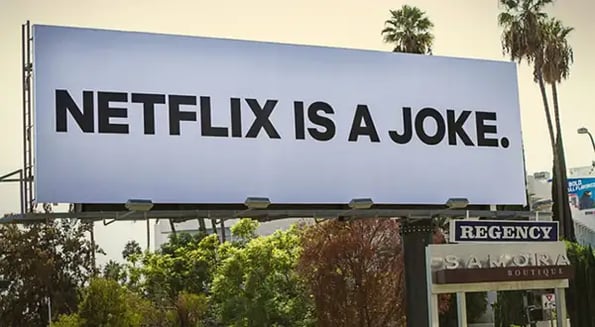Reuters reports that Netflix has offered a competitive $300m bid to purchase Regency Outdoor Advertising, a billboard company in LA.

For Netflix, which describes itself as “leading the way for digital content since 1997,” the purchase of an old-school billboard company is not only ironic — it’d be the largest acquisition in company history.
Why jump on the board-wagon?
The same reason your cousin Stacy took 43 photos of her tiramisu yesterday: Netflix is doing it for the ’gram. Billboards blew up in the 1920s by appearing in the windows of passing drivers — now, they’re doing it by appearing in millions of selfies.
“We try to make campaigns people will want to share,” explains Claire Knebl of Glossier, a direct-to-consumer makeup company that advertises on billboards.
Acquiring paid customers using social channels is becoming more expensive and less consistent, but amplifying a brand with eye-catching public visuals is becoming cheaper — thanks to those same networks.
Location, location, location-data
In real life, billboards for Netflix — or Glossier, Hims, Thinx, Spotify, Lyft — aren’t in places like Ebbing, Missouri. They’re on the 405 in Santa Monica, the 101 in San Francisco, or the subway in Manhattan — where the customers are.
Using customer data — some collected from smart billboards themselves — companies like Netflix infiltrate social feeds of Snap-happy customers.
Last year, “Netflix is a joke” billboards popped up across NY and LA and blew up on social media.
Who was behind them? Netflix, promoting their own comedy shows.

